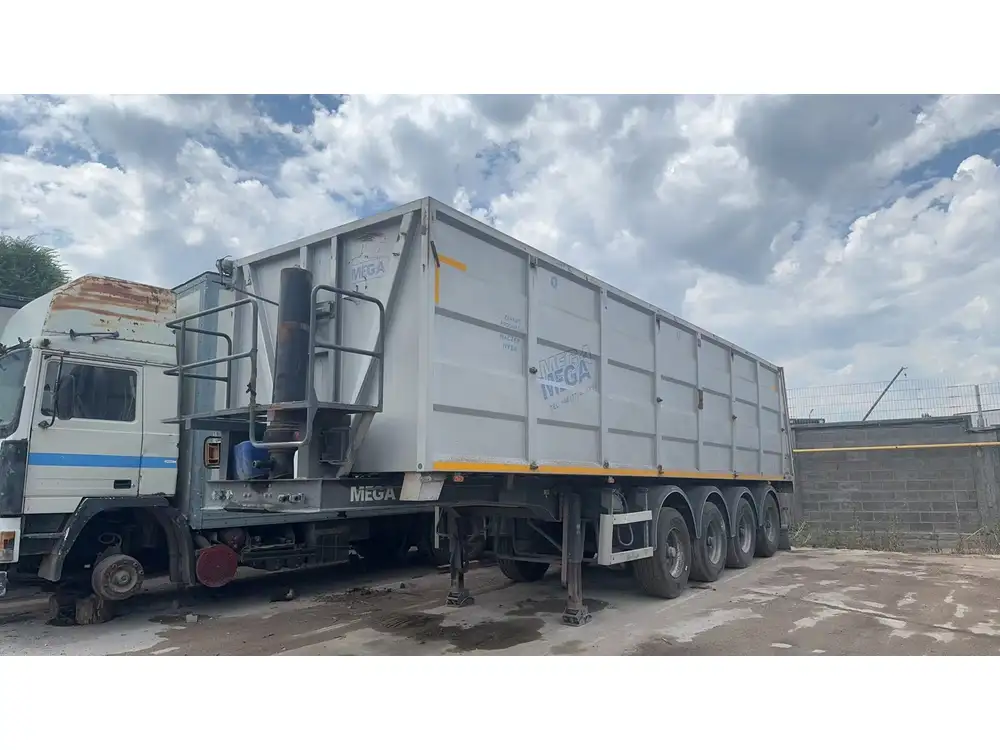In the world of transportation and logistics, semi-trailers serve as the backbone of freight shipping. One often overlooked yet critical aspect of semi-trailer design is the floor height. In this article, we delve into the intricacies of semi-trailer floor heights, examining various factors that affect these measurements, their implications for usability, and considerations for choosing the right trailer for your business needs.
What is the Standard Floor Height of a Semi-Trailer?
The standard floor height of a semi-trailer is a defining characteristic that varies depending on several factors, including the trailer type, axle setup, and intended use. The typical range for semi-trailer floor heights is 48 to 54 inches from the ground to the trailer’s floor. This measurement can influence loading and unloading processes, clearance requirements, and compatibility with shipping equipment.
Table 1: Common Semi-Trailer Types and Their Floor Heights
| Semi-Trailer Type | Average Floor Height (inches) | Common Uses |
|---|---|---|
| Flatbed Trailers | 48-54 | Transportation of heavy machinery and construction materials. |
| Dry Vans | 48-54 | General freight and consumer goods transport. |
| Refrigerated Trailers | 48-54 | Transporting perishable goods, maintaining temperature control. |
| Lowboy Trailers | 18-24 | Hauling oversized loads with low clearance requirements. |
| Step Deck Trailers | 24-30 | Flexible loading height for taller equipment while adhering to legal height restrictions. |
The variations among trailer types highlight the necessity of understanding the specific requirements for your logistics operation.

Factors Influencing Semi-Trailer Floor Heights
Several variables can influence the floor height of a semi-trailer:
1. Trailer Type and Design
Each trailer type has a unique design catering to specific cargo needs, impacting its overall height. For example, flatbed trailers boast a higher floor height, making it easier to load large equipment without the need for specialized ramps.
2. Axle Configurations
The number of axles on a semi-trailer considerably affects its height. A trailer with more axles typically carries more weight, which may require a higher floor to manage axle load distribution effectively.

3. Load Requirements and Weight Distribution
Consistent weight distribution across the trailer is pivotal. High-floor options accommodate larger loads without exceeding height regulations. Additionally, some trailers offer adjustable air suspension systems that can alter the floor height based on load weight.
4. Regulatory Standards and Regional Compliance
Different regions may have specific regulations regarding trailer heights. For instance, the Federal Highway Administration in the United States has established standards that often influence semi-trailer designs.
Implications of Floor Height on Usability

Loading and Unloading Efficiency
Considerations for Accessibility
Floor height plays a crucial role in loading and unloading efficiency. A higher floor can lead to challenges, such as:
- Loading Dock Compatibility: Not all loading docks are equipped to handle higher trailers, which can pose operational challenges.
- Equipment Compatibility: Certain forklifts and pallet jacks have height limitations, affecting their ability to load or unload goods efficiently.
Height Clearance and Regulations

Navigating Underpasses and Structures
Understanding the dimensions of your semi-trailer, including floor height, is essential for ensuring compliance with road safety regulations. If the total vehicle height exceeds legal limits, inadequate clearance can result in costly accidents or penalties.
Safety and Stability Concerns
Center of Gravity in Transport
The floor height directly influences the center of gravity, especially when transporting heavy loads. A higher center of gravity may lead to instability, increasing the risk of rollovers or cargo shifts during transit.

Selecting the Right Semi-Trailer for Your Operation
Factors to Consider When Choosing a Semi-Trailer
Cargo Type: Assess the nature of goods you typically transport. Are they bulky, heavy, or sensitive to temperature changes? This will determine the type of semi-trailer that fits your needs.
Frequency of Loading Dock Use: If you frequently operate at loading docks, prefer a trailer height compatible with most facilities.
Regulatory Compliance: Always check local laws regarding trailer height and weight limits to avoid potential fines or legal issues.
Comparing Options: A Checklist

Key Questions to Evaluate
- What is the primary purpose of the trailer?
- What loading and unloading mechanisms will you typically use?
- Are there specific clearance regulations in the regions where you operate?
- How will the floor height affect loading efficiency for your specific cargo?
The Future of Semi-Trailer Design: Trends to Watch
Technological Innovations
As technology continues to evolve, so do the designs of semi-trailers. Manufacturers are focusing on creating adjustable trailers that can modify floor height on-the-go, enhancing operational flexibility.

Sustainability Considerations
Eco-conscious design is becoming increasingly important in the transportation sector. Lightweight materials and aerodynamics are key trends as manufacturers strive to reduce fuel consumption and emissions, potentially impacting floor height designs.
Conclusion
Understanding the nuances of semi-trailer floor heights is crucial for anyone involved in the logistics and transportation industry. It influences everything from loading efficiency and compliance with regulations to the safety of transporting goods. By recognizing the types of trailers available, the implications of different height choices, and the evolving trends in design, you can make informed decisions that enhance your operations and support the overall goals of your business.
Key Takeaways
- The typical floor height of a semi-trailer ranges from 48 to 54 inches, influenced by various design factors.
- Selecting the right trailer involves evaluating cargo needs, loading dock accessibility, and regulatory compliance.
- Stay informed about industry trends and technological advancements that may affect future semi-trailer designs.
By staying informed and considering these factors carefully, operators can optimize their fleet, ensuring efficiency, safety, and compliance in an ever-evolving industry.



